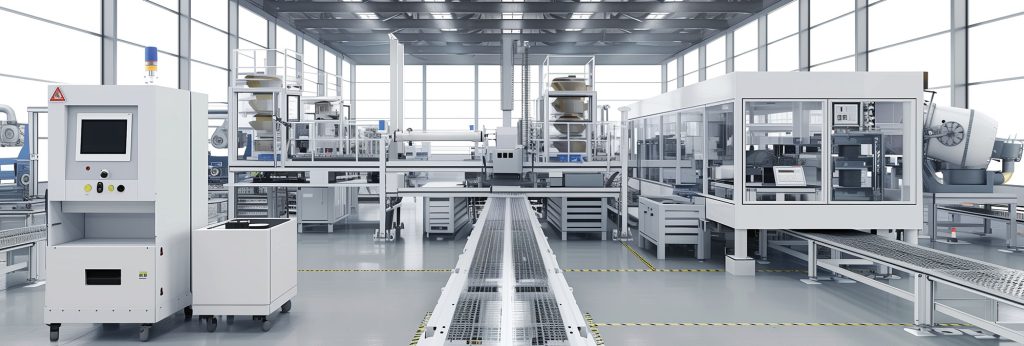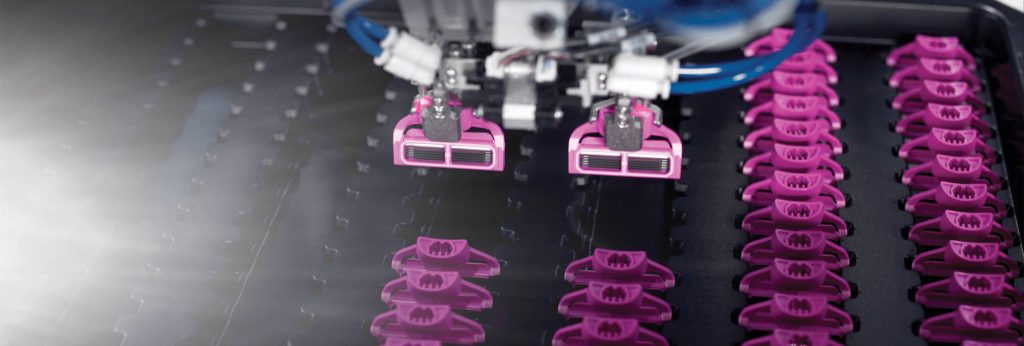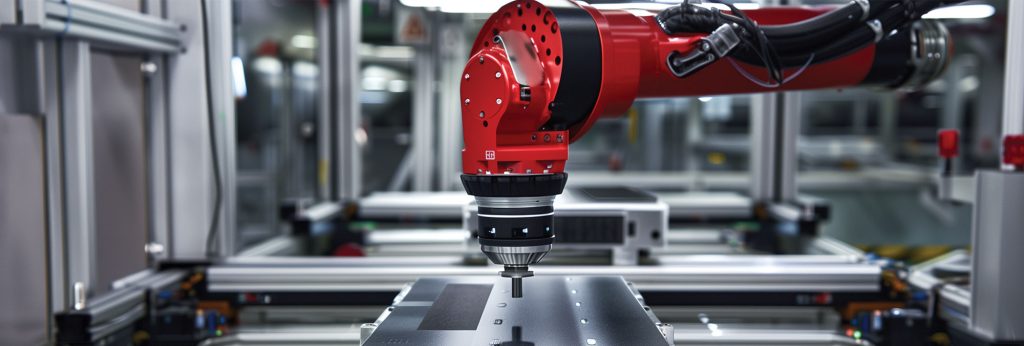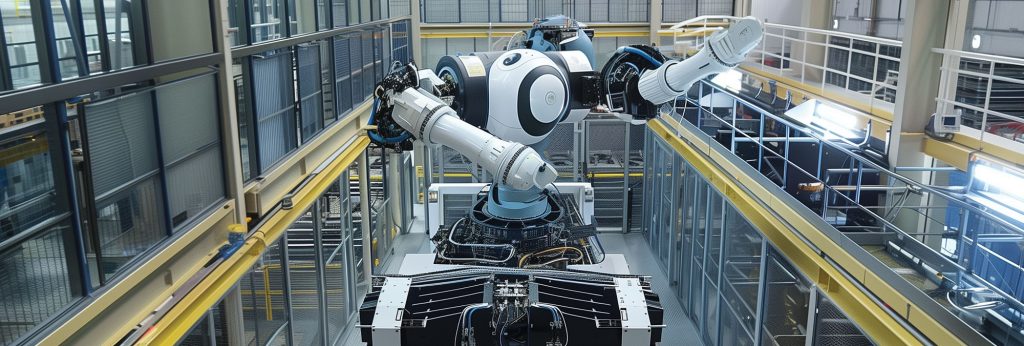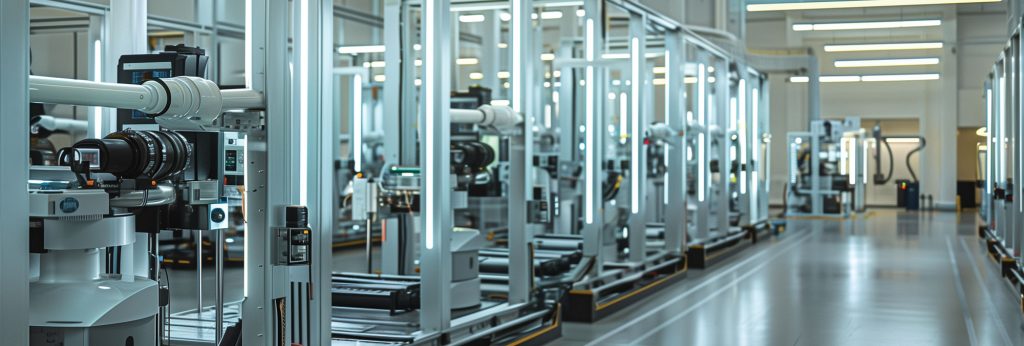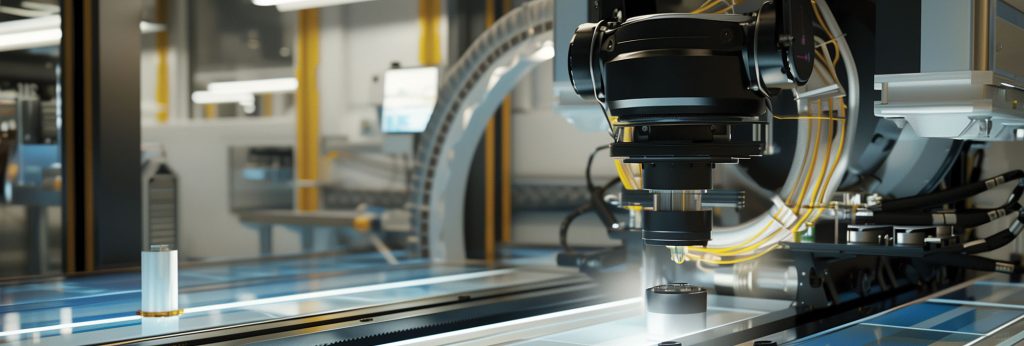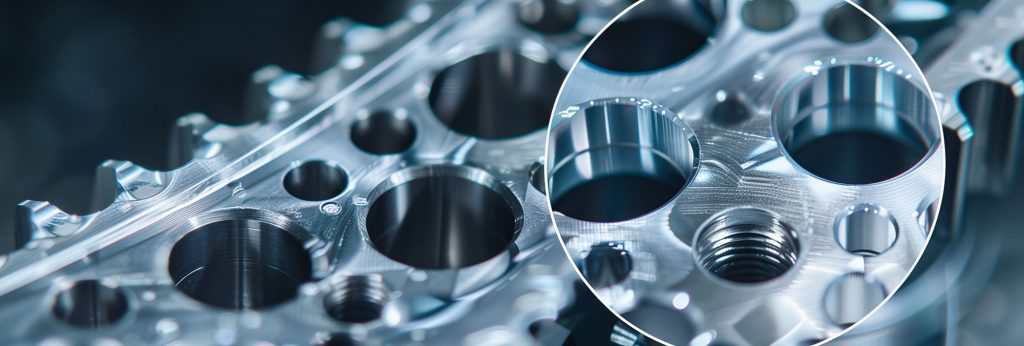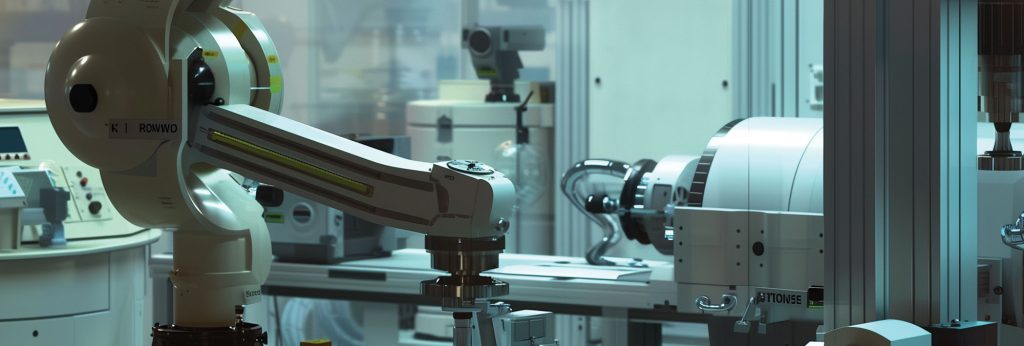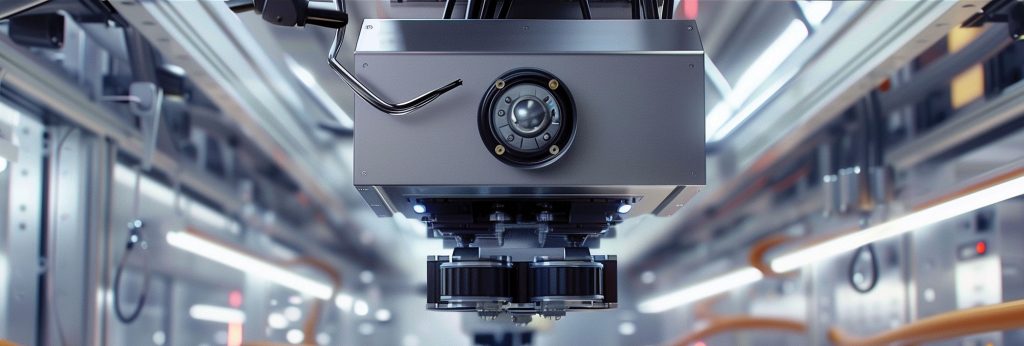Precision Automation Solutions
Designed for today’s demands. Engineered for tomorrow’s possibilities.
Your precision automation experts
Solutions design and integration of end-to-end manufacturing automation, full factory integration, complex assembly & process automation, high-speed in-line optical & vision inspection and module builds for high throughput volume manufacturing applications with micron-level tolerances, and designed by a world-class engineering team.
Precision engineering capabilities
From complex material handling and welding to sub-micron dispensing, assembly, and inspection, our team is ready to build a solution to support your quality, production, and precision goals.
Ready to begin?
Capabilities
Assembly
Battery Assembly
Dispensing
Inspection
Material Handling
Metrology
Motion Control
Sensor Integration & Lighting
Software Solutions
Welding, Cutting & Cleaning
- Our Capabilities
- Aerospace & Defense
- Automotive & E-Mobility
- Consumer
- Energy Storage & Battery
- Medical & Life Sciences
- Semiconductor
Our Expertise
DWFritz designs and deploys custom, high-precision manufacturing automation solutions across industries and around the world. We specialize in the most complex inspection, assembly, and handling processes. For over 50 years, manufacturers with impossible manufacturing challenges have turned to DWFritz for the solution.
Our Expertise
- High-precision, ITAR-compliant solutions for everything from large composite parts to microscopic subassemblies to energetic materials. Uncompromising security protocols, and unmatched speed.
Our Expertise
- Revolutionary battery cell manufacturing solutions, high-speed noncontact metrology for quality control, and precision component assembly & test. Build faster, more safely, with better quality, in a smaller footprint.
Our Expertise
- Precision motion control, machine vision, and micron-level inspection solutions that enable next-generation consumer goods companies to manufacture at scale, while improving efficiency and reducing cost.
Our Expertise
- Products and solutions for dry-room assembly, inspection, and testing of battery, energy storage, and energy generation products. Our solutions help battery and energy generation product manufacturers hit increasingly demanding requirements for energy density, generation capability, quality, and cost.
Our Expertise
- Nanoliter dispensing, microscopic assembly, ultra-precise metrology, and testing for Class III medical devices. Accelerate manufacturing while ensuring flawless compliance and quality.
Our Expertise
- Tailored end-to-end solutions that meet the high volume and reliability demands of modern semiconductor manufacturing.
Learn more about Precision Automation
Fully Automated Battery Manufacturing
With more than 20 million electric vehicles expected to hit the market by 2030, the automotive industry alone is significantly increasing demand for new products and technologies in the battery…
Scaling Up to a Smart Factory with Automated Assembly
Automated assembly stations provide higher productivity and product quality while lowering product cost in a fraction of the space required for conventional tooling. Staying competitive in the drive toward smart…
Precision Dispense Solution for a Class 3 Medical Device Implant
Automated precision dispensing is an important process step in many projects we encounter specifically in the medical device, consumer electronics, semiconductor, and battery manufacturing industries. Achieving repeatability in dispensing is…
Why Material Handling Stage Design Matters
When high volume manufacturers need 100% inspection of parts, non-contact metrology stage design should not only maximize sensor use, but also easily measure different parts on the same system. Whether…
Data Integrity and The Digital Twin
Industrial production technologies are rapidly advancing, and traditional metrology is increasingly turning to non-contact measurement techniques to keep pace. To maintain the higher throughputs required by product demands, production metrology…
Risk Mitigation: From Concept to Production
Risk can be defined as the possibility that an event could adversely affect the achievement of an objective. Automating precision solutions is, in and of itself, a process of identifying,…
Improving Product Quality Through Automation
While automating metrology and inspection to improve product quality is not new, the reasons and goals to automate have evolved along with the technology and need. For example, inspection techniques…
Five Keys to Executing a Precision Automation Project
Automating advanced manufacturing systems is a complex process that requires careful planning and execution. The right time to automate will depend on several factors, including the nature of the products…
Project Management Ensures Success of Automation Projects
Project managers are vital in planning and executing automation projects, ensuring that high speed assembly and metrology systems are delivered on time and within budget. Automating the metrology and inspection…
Six Key Reasons to Automate Your Manufacturing
Automation is synonymous with advanced manufacturing. Factory automation has been an important ingredient in not only the modern factory, but also in production environments from the past. While many factories…
Non-Contact Metrology Platform vs. Traditional CMM
Understanding the features of a non-contact metrology platform versus a traditional contact coordinate measuring machine (CMM) can help manufacturers choose the right equipment for inspection. By investing in the right…
Improving Yield Using High Speed Non-Contact Metrology
Speed, precision measurements and real-time data from non-contact metrology platforms make a difference in reducing scrap and improving yield for high volume consumer electronics manufacturers. In contract manufacturing, 100% inspection…
Benefits of Consolidating Metrology Operations into One System
Automated metrology platforms not only ensure high quality finished goods, these high speed solutions also lower total cost per part by consolidating multiple metrology operations into one system. High volume…
3 Key Benefits of an Automated Non-Contact Metrology System
In the precise world of advanced manufacturing, microns and milliseconds matter when inspecting class 3 medical devices, fitness trackers and smartphones to meet either government regulations or consumer standards. The…
Improving Long-Term Performance of Metrology Systems
In challenging manufacturing environments, 3 key factors influence the long-term performance of automated metrology systems installed in uncontrolled environments. Developing a metrology solution that consistently meets demanding production rates, yields…
Measuring Complex Part Geometries
Tightening dimensions are a trend both for components and for an increasing number of parts and devices. Incorrect part dimensional measurements can lead to failure and costly recalls. Small consumer…
Speed Wins in Contact vs. Non-Contact Surface Profiling
In surface morphology inspection, non-contact optical methodologies provide the same measurement results as a conventional contact profiler, but in a fraction of time. Surface finish quality matters in many industries,…
Smart Cosmetic Defect Detection Increases Productivity
Using deep learning, smart machine vision systems can inspect complex surfaces and parts for cosmetic defects, increasing manufacturing productivity and throughput. Automated cosmetic defect inspection can be challenging — past…
Ensuring Pharmaceutical and Medical Inspection Compliance with Machine Vision
Machine vision offers an accurate and efficient method of inspecting package seals in medical and pharmaceutical manufacturing, providing companies a means to comply with device testing regulations and avoid costly…
Choosing the Right Lighting for High Speed Inspection
Lighting and timing are key factors when measuring parts in high speed motion. By using short bursts of high intensity lighting, the vision system effectively freezes the motion for inspection….
Automated Seal Inspection Improves Reliability of Sterile Packaging
Many medical device manufacturers are finding that automated seal inspection improves sterile package reliability, decreasing packaging failure, product contamination and costly recalls. Sterile packaging of medical devices is critical for…
Automating Complex Dispensing Applications Successfully
Automating precision solutions that overcome complex challenges and consistently meet demanding production goals is no small feat. When that solution requires a complex dispensing application, the task becomes exponentially more…
High-speed Inspection Using Non-contact Metrology
Product quality is vital to customer satisfaction, but performing quality inspections in high-volume or low-volume/high-mix manufacturing presents unique challenges that require precision solutions. Without the appropriate systems and tools for…
Fully Automated Battery Manufacturing
With more than 20 million electric vehicles expected to hit the market by 2030, the automotive industry alone is significantly increasing demand for new products and technologies in the battery…
Scaling Up to a Smart Factory with Automated Assembly
Automated assembly stations provide higher productivity and product quality while lowering product cost in a fraction of the space required for conventional tooling. Staying competitive in the drive toward smart…
Precision Dispense Solution for a Class 3 Medical Device Implant
Automated precision dispensing is an important process step in many projects we encounter specifically in the medical device, consumer electronics, semiconductor, and battery manufacturing industries. Achieving repeatability in dispensing is…
Why Material Handling Stage Design Matters
When high volume manufacturers need 100% inspection of parts, non-contact metrology stage design should not only maximize sensor use, but also easily measure different parts on the same system. Whether…
Data Integrity and The Digital Twin
Industrial production technologies are rapidly advancing, and traditional metrology is increasingly turning to non-contact measurement techniques to keep pace. To maintain the higher throughputs required by product demands, production metrology…
Risk Mitigation: From Concept to Production
Risk can be defined as the possibility that an event could adversely affect the achievement of an objective. Automating precision solutions is, in and of itself, a process of identifying,…
Improving Product Quality Through Automation
While automating metrology and inspection to improve product quality is not new, the reasons and goals to automate have evolved along with the technology and need. For example, inspection techniques…
Five Keys to Executing a Precision Automation Project
Automating advanced manufacturing systems is a complex process that requires careful planning and execution. The right time to automate will depend on several factors, including the nature of the products…
Project Management Ensures Success of Automation Projects
Project managers are vital in planning and executing automation projects, ensuring that high speed assembly and metrology systems are delivered on time and within budget. Automating the metrology and inspection…
Six Key Reasons to Automate Your Manufacturing
Automation is synonymous with advanced manufacturing. Factory automation has been an important ingredient in not only the modern factory, but also in production environments from the past. While many factories…
Non-Contact Metrology Platform vs. Traditional CMM
Understanding the features of a non-contact metrology platform versus a traditional contact coordinate measuring machine (CMM) can help manufacturers choose the right equipment for inspection. By investing in the right…
Improving Yield Using High Speed Non-Contact Metrology
Speed, precision measurements and real-time data from non-contact metrology platforms make a difference in reducing scrap and improving yield for high volume consumer electronics manufacturers. In contract manufacturing, 100% inspection…
Benefits of Consolidating Metrology Operations into One System
Automated metrology platforms not only ensure high quality finished goods, these high speed solutions also lower total cost per part by consolidating multiple metrology operations into one system. High volume…
3 Key Benefits of an Automated Non-Contact Metrology System
In the precise world of advanced manufacturing, microns and milliseconds matter when inspecting class 3 medical devices, fitness trackers and smartphones to meet either government regulations or consumer standards. The…
Improving Long-Term Performance of Metrology Systems
In challenging manufacturing environments, 3 key factors influence the long-term performance of automated metrology systems installed in uncontrolled environments. Developing a metrology solution that consistently meets demanding production rates, yields…
Measuring Complex Part Geometries
Tightening dimensions are a trend both for components and for an increasing number of parts and devices. Incorrect part dimensional measurements can lead to failure and costly recalls. Small consumer…
Speed Wins in Contact vs. Non-Contact Surface Profiling
In surface morphology inspection, non-contact optical methodologies provide the same measurement results as a conventional contact profiler, but in a fraction of time. Surface finish quality matters in many industries,…
Smart Cosmetic Defect Detection Increases Productivity
Using deep learning, smart machine vision systems can inspect complex surfaces and parts for cosmetic defects, increasing manufacturing productivity and throughput. Automated cosmetic defect inspection can be challenging — past…
Ensuring Pharmaceutical and Medical Inspection Compliance with Machine Vision
Machine vision offers an accurate and efficient method of inspecting package seals in medical and pharmaceutical manufacturing, providing companies a means to comply with device testing regulations and avoid costly…
Choosing the Right Lighting for High Speed Inspection
Lighting and timing are key factors when measuring parts in high speed motion. By using short bursts of high intensity lighting, the vision system effectively freezes the motion for inspection….
Automated Seal Inspection Improves Reliability of Sterile Packaging
Many medical device manufacturers are finding that automated seal inspection improves sterile package reliability, decreasing packaging failure, product contamination and costly recalls. Sterile packaging of medical devices is critical for…
Automating Complex Dispensing Applications Successfully
Automating precision solutions that overcome complex challenges and consistently meet demanding production goals is no small feat. When that solution requires a complex dispensing application, the task becomes exponentially more…
High-speed Inspection Using Non-contact Metrology
Product quality is vital to customer satisfaction, but performing quality inspections in high-volume or low-volume/high-mix manufacturing presents unique challenges that require precision solutions. Without the appropriate systems and tools for…

